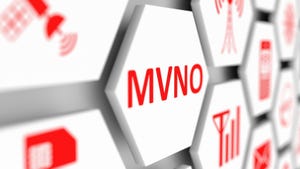End-to-end trend continues as Netcracker nabs Convergys’ BSS
Customer demand for cost-effective IT systems which promise data monetization, content and partner management capabilities and above all else fully end-to-end OSS/BSS integration, was the driver behind the acquisition of Convergys’ BSS business, according to the management of Netcracker. The strategy however highlights the continuing trend towards single, fully-integrated platform solutions and away from open, standardized interfaces.
March 23, 2012

By Peter Dykes
Customer demand for cost-effective IT systems which promise data monetization, content and partner management capabilities and above all else fully end-to-end OSS/BSS integration, was the driver behind the acquisition of Convergys’ BSS business, according to the management of Netcracker. The strategy however highlights the continuing trend towards single, fully-integrated platform solutions and away from open, standardized interfaces.
For Netcracker, the $449m acquisition is a good fit, adding to the company’s existing OSS expertise and the service activation and provisioning capabilities it acquired from Subex in September 2012. Netcracker’s vice president, strategy, Sanjay Mewada was keen to stress to analysts that the company goal in acquiring the Convergys IM business was to build a productized, end-to-end OSS/BSS offering. For the customer, this would have all the benefits of relatively low implementation costs by virtue of pre-integrated components and would also enable Netcracker to offer the whole platform as a cloud-based service, which could also work out cheaper for the customer.
While these arguments make perfect sense, they are adding to the momentum which is gathering behind vendor consolidation in the OSS/BSS market. The increasing cost and complexity of next-generation support systems is indeed making pre-integrated and cloud-based systems more attractive to prospective buyers and vendors are responding accordingly. In addition, with the traditional network infrastructure vendors such as Ericsson and Nokia Siemens Networks, along with the newer equipment market entrants from the Asia-Pacific region increasingly extending their portfolio’s to include one-stop shopping for integrated OSS/BSS, consolidation is becoming a survival strategy for the mid-range telecoms software vendors. Even the mighty Amdocs decided it was incomplete without the policy management expertise of Bridgewater and Ericsson’s acquisition of Telcordia was entered into with a similar rationale.
So what happened to the idea of the multi-vendor environment which would enable any module from any vendor to connect with any other module from any other vendor? The answer is that the idea is still out there and vendors are claiming compliance to existing standards and guidelines, but with such commercial pressure on operators to monetize their mobile broadband networks and competitive pressures on the vendors to respond as quickly and cheaply as possible, does it really matter whether interfaces are standardized or not? Is there much point in being compliant with standards and guidelines aimed at reducing integration costs when most vendors have their own proprietary solutions?
For the dwindling number of support software vendors that offer specific core elements such as policy or on-line charging systems, standardized interfaces are a big issue, because they are the means whereby channels to market are opened through partnerships with other vendors. For the leading software vendors however, the talk is all about end-to end solutions and as they continue to gobble up their smaller counterparts, it is likely that standardization will become at best a side issue if not completely irrelevant in the longer term.
Read more about:
DiscussionYou May Also Like








.png?width=300&auto=webp&quality=80&disable=upscale)


_1.jpg?width=300&auto=webp&quality=80&disable=upscale)